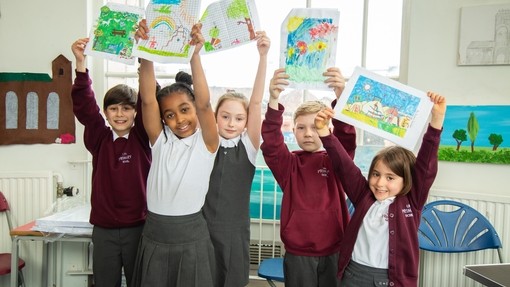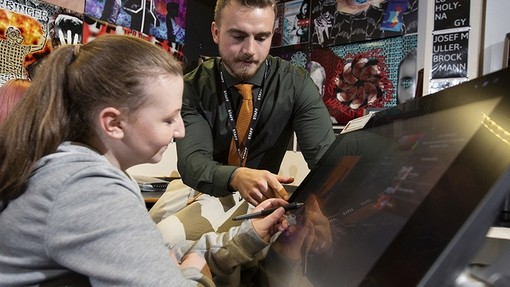The impact of setting up a student arts council
Engaging and empowering children and young people is one of the eight criteria on the Artsmark Framework. Jenni Lewis, Director of Cultural and Creative Education at Dagenham Park Church of England School talks to us about the importance of pupil voice and how to authentically embed pupil voice across the whole school.
Why is pupil voice important for your school?
Pupil voice is vital for us as it empowers young people to have an impact on their learning environment. When pupils feel they have a voice and a say in the decisions that affect them, they are more engaged. Additionally, empowering them to speak up about what they want and how they see arts in the school being improved, has improved pupil confidence and has had an impact on oracy.
What have you done to improve the way you engage children and young people in decision making?
We set up an arts council which has been running for several years, meeting every half term. The pupils set priorities for improvement and monitor progress towards these.
The pupils have designed their own logo, created a mission statement, planned their own cultural trip, fed into the planning for the school creative and culture day, fed into the design of graphics for whole school creative initiatives and attended the borough’s young people’s creative conference. As well as the arts council, pupils across the school get a real say in what they learn, how they learn and how they record their learning. In music, pupils pick the songs they wish to work on in their bands and in art and drama pupils pick their genre, style and script. In Art pupils choose the style and subject of their art pieces.
What impact has your student council had?
94% of pupils said that involvement in the Student Arts Council has increased their leadership skills and 100% said that the Student Arts Council had had a significant impact on the school. One pupil said:
“Everyone involved has helped make it happen whether it will have an effect on them or not…by having our own ideas and being confident to have ownership of our ideas but also to share them and link others ideas to them. I think the ideas and proposals [the student arts council] have brought to our school are really going to give the younger years in particular more opportunities to shine and get the most out of their time. Personally, whilst being in the [the student arts council] it has helped me realise that the students in a school have more power to change things than what I originally thought, and by learning this I’ve developed better confidence in sharing my ideas sometimes with people I wouldn’t usually talk to.”
How difficult (or easy) has it been to implement the student council?
It has been really easy to implement the student arts council, mainly because the costs have been very low and the pupils have been so very enthusiastic. It has taken some teacher time but this has been linked to some professional development opportunities so the staff have gained skills from leading on this. We have also spent some money on badges and trips, however we have taken advantage of subsidised low-cost tickets and free opportunities where possible.
How has this supported your Artsmark journey?
The project has helped us on our Artsmark journey by supporting the Children and Young People criteria ‘engaging and empowering our young people’ and also supporting the Quality Principle ‘actively involving children and young people’.
What advice would you give to other Artsmark settings about embedding pupil voice?
Meeting regularly has been key to keeping the momentum of the group going. The pupils have really enjoyed the more creative aspects such as the logo competition and of course designing trips. We have used older arts council pupils to support with recruiting new Year 7 pupils every September and got them involved in everything arts related as much as possible as the school arts ambassadors.
Download Dagenham Park’s How to set up a student arts council resource.


